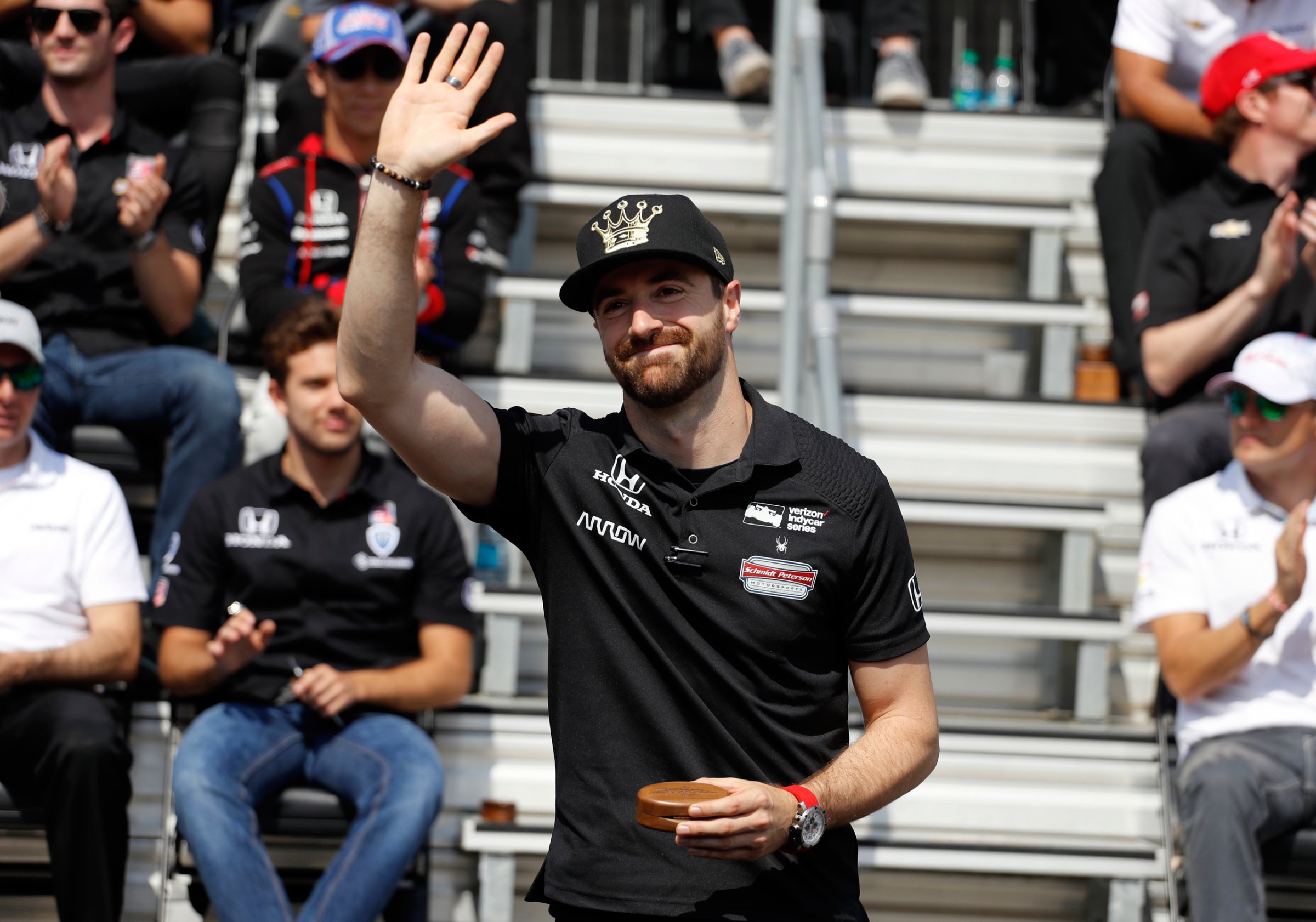
Coming into Turn 3 of the Indianapolis Motor Speedway, on May 18 of last year, James Hinchcliffe lost control of his car. He was traveling more than 200 miles per hour. What happened next probably should have killed him. His car pounded into the wall and tore into pieces; one stuck itself into Hinchcliffe’s thigh, striking an artery. The car skidded across the track, nearly turning over. Medics rushed him the hospital, where he underwent lifesaving surgery on his leg.
Hinchcliffe woke up the next day. He stared into a bunch of bright lights, with a tube in his throat, wondering what was going on. Head trauma wiped out his memory of the crash.
His first question: what happened? Second: is my family OK (everyone was fine)? Third: when can I get back into a race car?
The doctors told Hinchcliffe seven months: he only needed four. “When you take something away from someone and that’s all they live for, they’re highly motivated to get it back,” says Hinchcliffe. And a year after his life-threatening accident, Hinchcliffe clocked the fastest Indy 500 qualifying speed at the same track that almost killed him. He has the pole position at the 100th running of the Indy 500, on May 29, and will shoot to complete a remarkable comeback by chugging milk in victory lane. “You’d almost think it was rigged, it makes too good a story,” says Hinchcliffe of his pole win, and more than legit shot at winning Indy after his horrific crash. “It’s definitely not something we expected coming into the week.”
A few weeks after his accident, a doctor told Hinchcliffe he lived through the highest-impact crash ever recorded in Indy history. “I thought, ‘Cool, I got a record,” Hinchcliffe says. “Not a record I was aiming for, but I’ll take it.” Hinchcliffe can make quips now, but his recovery was grueling: his neck pain, in particular, was even sharper that the hurt in his legs. In September of last year, he got back in a race car, at a track in Wisconsin. “The only fear came from the worry that I wouldn’t be able to do it again,” he says. “Was there something I didn’t know about, subconscious, deep down that was going to hold me back from pushing to the absolute edge?”
After passing that first test, Hinchcliffe’s confidence grew. Returning to Indy, he says, wasn’t nearly as traumatic as you’d think because he doesn’t remember the crash. “So my last memory of the speedway was a great one,” he says. “I was driving and I was fine.”
Hinchcliffe, the self-proclaimed mayor “Hinchtown” on social media, is one of the more popular drivers in the IndyCar series. He grew up in the suburbs of Toronto; his father, Jeremy, was originally from England, and loved racing. “It was atypical upbringing in the sense that my father wasn’t a hockey fiend, he was a racing field,” says Hinchcliffe. “He actually bought a vintage race car when he was like 45, and went racing with a bunch of other 45-year-old guys that have mid-life crises and buy little vintage race cars. Following that year I got my first vintage go-kart for my birthday and started racing. So technically he beat me to it by a year.”
Indy hasn’t been too kind to recent pole sitters; the last one to win the race was Hélio Castroneves, back in 2009. “People keep reminding me,” says Hinchcliffe. He doubts that the extra attention, thanks to this being the 100th running of the race, will add any extra pressure. “This is our Super Bowl, our World Series, our everything,” says Hinchcliffe. “Whether it’s the 82nd running or the 109th running, the pressure’s the same. The desire to win is the same. When the engines fire and the green flag drops, we don’t care what number it is, we don’t care how may people are watching on TV, or how many people are there. We care about one thing. Getting to the front.”
More Must-Reads From TIME
- The 100 Most Influential People of 2024
- The Revolution of Yulia Navalnaya
- 6 Compliments That Land Every Time
- What's the Deal With the Bitcoin Halving?
- If You're Dating Right Now , You're Brave: Column
- The AI That Could Heal a Divided Internet
- Fallout Is a Brilliant Model for the Future of Video Game Adaptations
- Want Weekly Recs on What to Watch, Read, and More? Sign Up for Worth Your Time
Write to Sean Gregory at sean.gregory@time.com